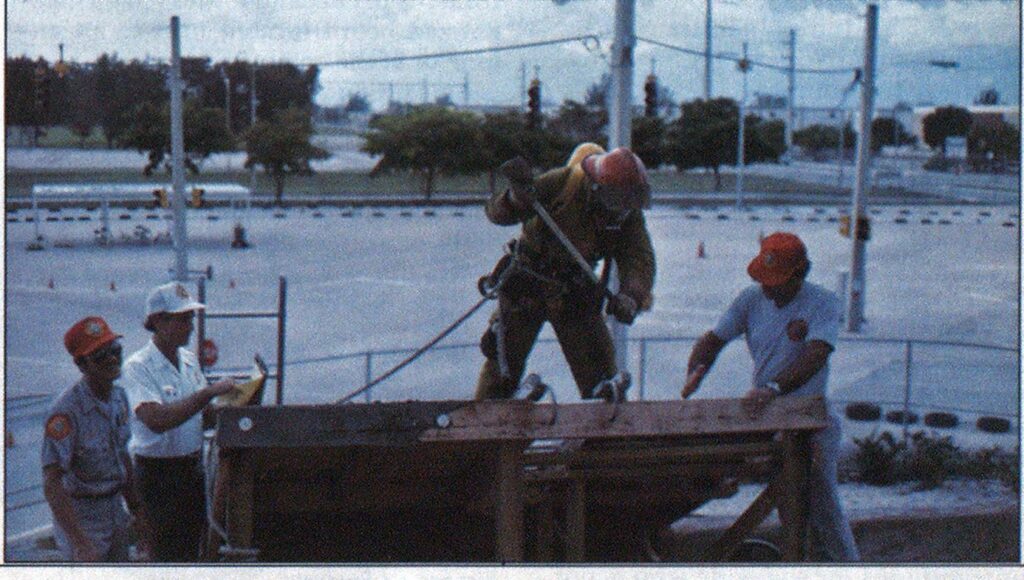
Roof Simulator Improves Training
DEPARTMENTS
Training Notebook
Timely and effective roof ventilation is crucial to successful structural firefighting. It requires not only stamina, but considerable skill and training to vent the roof safely.
Ordinarily, to teach, drill, and evaluate a firefighter’s ability in this area, an abandoned building with a roof that is substantial enough to safely work on is found. Since it can be very difficult to locate the “right” structure, personnel consequently receive varying degrees of hands-on experience.
Along with Lieutenant Rob Amove, also part of the recruit training staff of the Metropolitan-Dade County Fire Department in Miami, FL, we devised a simple, low cost, and fairly realistic simulator to help recruits develop roof ventilation skills and techniques.
Basically, the simulator is a wooden roof built on top of the Alamo (the burn building at the Southeast Florida Academy of Fire Science). It consists of a 16 * 8-foot frame made up of 2 * 8-inch joists. Half of the frame is covered with plywood sheathing and the other half with 1 * 6-inch tongue-in-groove sheathing. The sheathing is covered with roofing felt with tin caps and then covered with asphalt shingles. The entire simulator is supported/elevated on 4 * 4-inch legs, whose length determine the pitch of the roof.
The “heart” of the simulator is the 6inch high pallets that are an inexpensive, easily replaceable, and fairly realistic approximation for roof decking boards and their supporting joists (which is what is cut for actual roof venting). Rather than nail the pallets to the roof, Lieutenant Wayne Bunker suggested that these pallets be laid into a 4 * 4-foot recess cut into the simulated roof, nailed to the appropriate height, and “C” clamped to the underlying boards (the supporting members of the roof) to enable the pallet to sit flush with the roof.
Following classroom instruction, a recruit dons full turnout gear and selfcontained breathing apparatus. He must reach the roof via a ground ladder, and then, working from a roof ladder due to the 45° angle at which the simulator is normally set up, safely make angle cuts along the supporting boards of the pallet with an axe or a circular power saw. Boards are then pryed from the underlying “joists” of the pallet. As an added safety measure during the evolution, a rescue rope is tied around the recruit.
The roof also serves as a visual aid as to how a roof is constructed and where to sound for supporting rafters. Because of the angles and positions at which the “joists” are laid in the recess, a trussed roof can also be addressed by this simulator.
The simulator can be mounted on any flat roof or the ground, if necessary.
Since our department started using the simulator, deficiencies in ventilation techniques have been identified and corrected. The practical application in this area of training has reinforced not only tactical procedures, but also instilled confidence and safety consciousness in our members. When put to the test in real world firefighting, our firefighters operated more smoothly and efficiently.

Photo cotsiesy of the Metro-Dade County Fire Department

